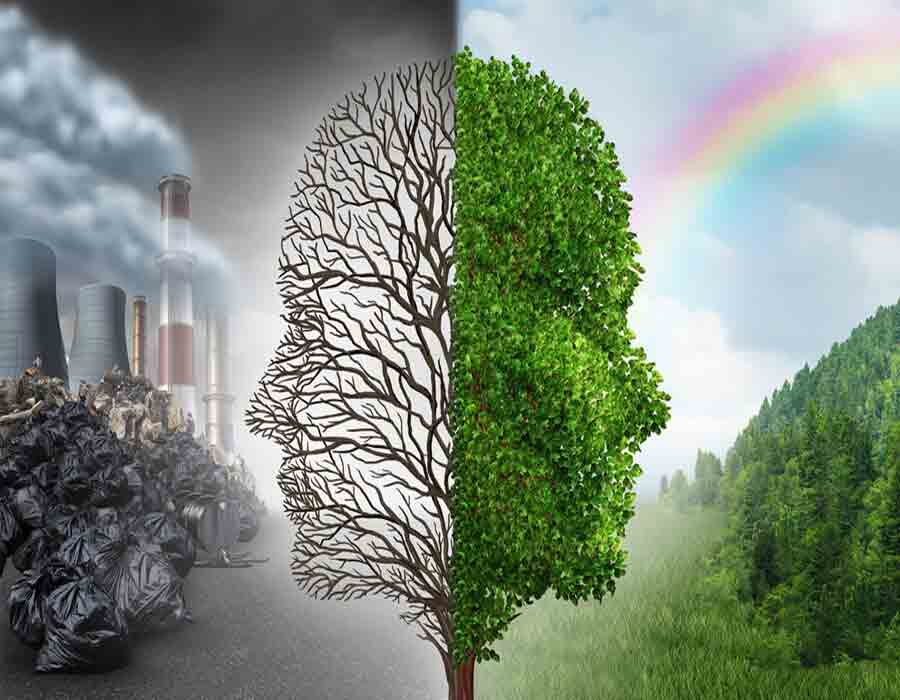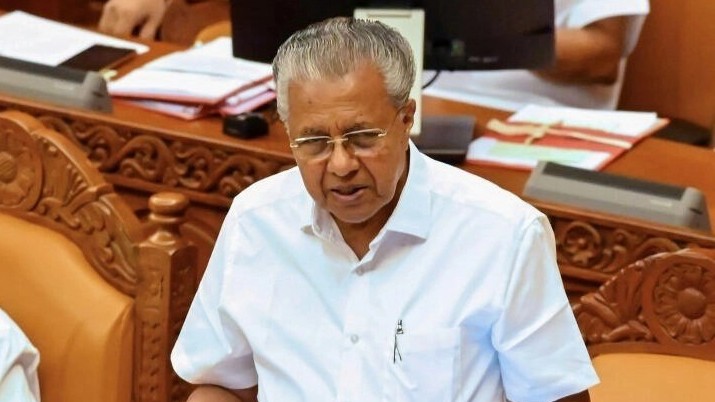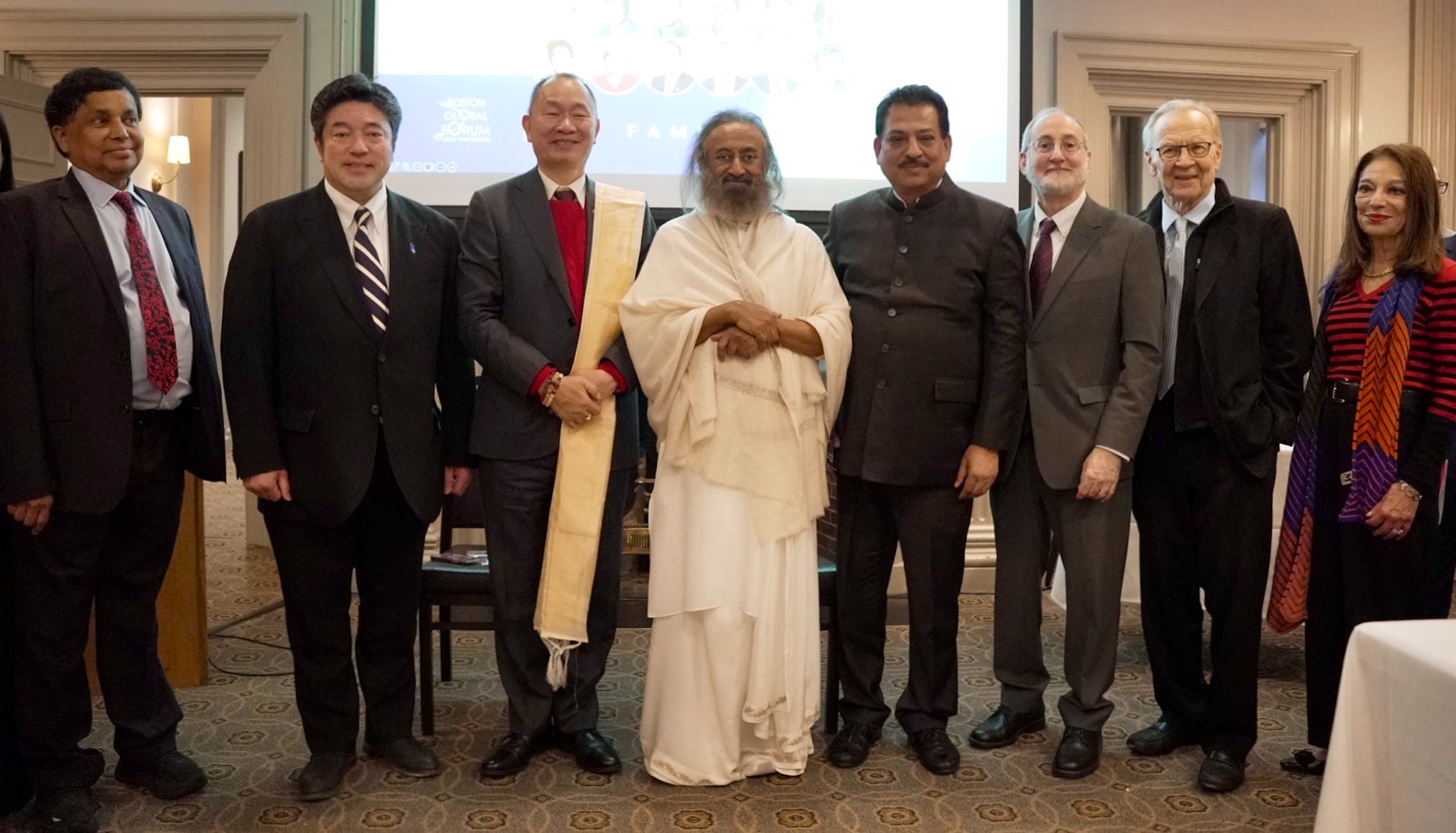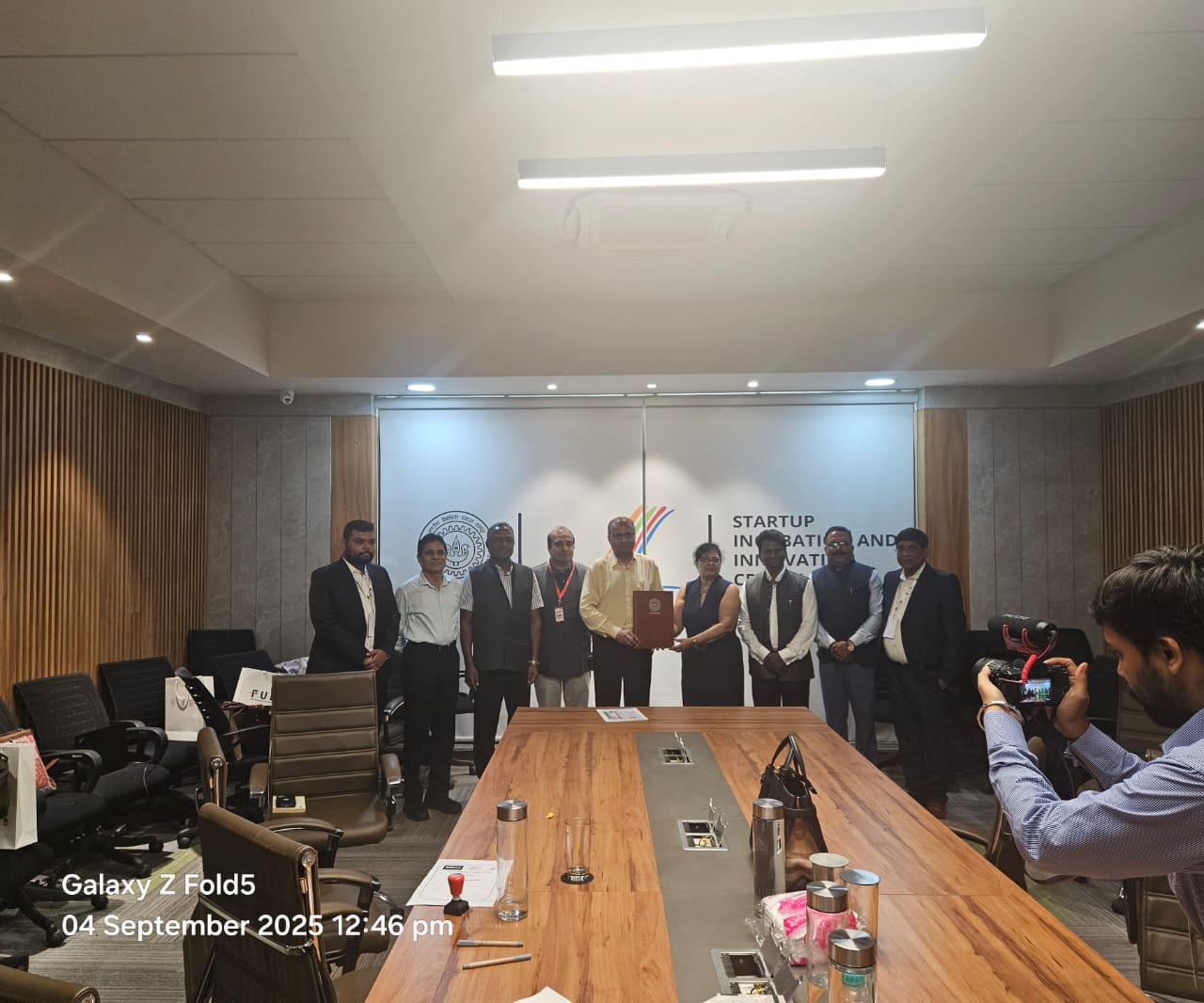Nature provides the foundation for human existence and prosperity, but humanity is waging war on it resulting in planetary crises, among others, (a.o), the climate change, biodiversity loss, pollution and COVID-19. The Nature, Natural systems and the Natural resources are interlinked, interdependent, and are nested, occupying the biggest space by nature, medium level space by natural systems and small space by natural resources. They are also interchangeably referred to in this paper.
Several reports provide unequivocal and alarming evidence that the planet is flashing red warning signs of natural systems failure. The way we produce and consume food and energy, along with the blatant disregard for the environment entrenched in our current economic model, has pushed nature to its limits. The consequences of our recklessness are apparent in human suffering together with towering economic losses.
Making peace with nature is the defining task of the coming decades. We still have a chance to put things in the right perspective. It’s time for the world to agree on a “New Deal for Nature and People”, committing to stop and reverse the degeneration of natural systems and build a nature – positive economy and society with peace and justice.
By recognising it’s true value of nature in policies, plans and economic systems, we can channel investments in activities that restore nature and enhance resilience and long term sustainability. Urgency and ambition are needed to transform various systems, including how we produce and consume food, sustainably manage water, provide sanitation, and manage forests, biodiversity, land and oceans. A sustainable economy driven by renewable energy and nature-based solutions will create new jobs, cleaner infrastructure and a resilient future. An inclusive world at peace with nature can ensure that people enjoy better health, the full respect of their human rights, and to live with dignity on a healthy planet.
A surge in fragility, conflict and violence (FCV) in recent years has left a trail of human suffering, displacement and protracted humanitarian needs. By 2030, up to two-thirds of the world’s extreme poor will live in situations affected by FCV. Violent conflicts have increased to the highest levels, observed over the past 30 years. The world also faces the largest displacement crisis ever, with more than 79 million people fleeing conflict and violence. These challenges are exacerbated by risks, such as nature destruction, violent extremism, and pandemics like COVID-19.
Human choices shaped by values and institutions, have given rise to the interconnected planetary and social imbalances, we face. If equity innovation and stewardship become central to what it means to live a good life, human flourishing can happen alongside easing planetary pressures as under:-
Addressing fragility, conflict, and violence; tackling climate, biodiversity and pollution emergencies; protecting and enhancing natural capital and ecosystem integrity; building resilience to natural hazards and extreme climate events; responding to environmental health risks; transforming food, water and energy systems to meet growing human needs in an equitable, resilient and environmentally friendly manner; transforming economic and financial systems so they lead and power the shift toward sustainability; supporting environmental justice movement to enhance the power of unseen, unheard and undervalued groups, and recovering from COVID-19 pandemics.
All the above issues have found solid footing on the ground, including human rights, nature protection, human health and livelihoods with peace and prosperity and thereby setting a determined new path towards sustainable development.
Addressing Planetary crises
Climate change.
Climate change poses serious challenges to environmental sustainability through natural hazards, extreme weather events, species loss, water scarcity, food and nutritional insecurity, cost of public health and many other impacts. A 2018 study on, “Climate change and violent conflict” by the Stockholm International Peace Research Institute said, “as the effects of climate crisis on livelihoods become more pronounced, support for rebel groups is likely to shoot”.
The Intergovernmental panel on climate change (IPCC) concludes that evidence of changes in the climate system is unequivocal, with the atmosphere and oceans warming, glaciers and polar ice melting, sea level rising, and greenhouse gas (GHG) concentration increasing. This scenario is of particular significance for South Asia as this region is highly vulnerable to climate – induced natural disasters and rising sea levels. Climate change could cause over 62 million people to be displaced in South Asia by 2050. “The South Asia’s Hotspots: Impacts of Temperature and Precipitation Change on Living Standard Report” says that 800 million people in the region live in FCV areas, where livelihoods are vulnerable to climate impacts and for potential displacement. For reducing the impact of climate change and promoting peaceful societies, the initiated programmes include: reducing carbon emissions, changing the energy mix, and mitigating the effects of climate change; help countries in formulation of “National Adaptation Plans (NAPs)” to strengthen resilience and adapt to climate change; build resilience to natural hazards and extreme climate events, and adoption of climate – smart practices and better water management.
India is highly vulnerable to climate change as under:-
Extreme weather events can impact 75% of India’s districts – with a spike in such events since 2005;
There is a shift occurring in the pattern of extreme climate events, flood-prone areas are becoming drought-prone and vice-versa in over 40% districts; in 2020, floods in Assam affected more than 60,000 people while Hyderabad recorded rainfall of 29.8 cms in 24 hours – Cyclone Amphan, which impacted the coastal districts of West Bengal, displaced over 4.9 million people; between 1970 and 2004, three extreme flood events occurred annually on average. After 2005, the yearly average rose to 11. Similarly, the annual average for districts affected by floods rose to 55 from 19. The yearly average number of districts affected by cyclones has tripled since 2005 and the cyclone frequency has doubled, and six of the ten extreme weather events globally in 2020 took place in Asia, with floods in India and China causing damages of over $40 billion.
Climate change resilience actions included:-
Bold steps on clean energy and energy efficiency, developing disaster risk reduction strategies in the face of growing climate threats; afforestation and biodiversity conservation; sustainable life-styles and guiding philosophy of “back to basics”; mobilising green finance, clean technology and green collaboration; strengthening resilience to climate change and natural disasters; making natural resources, environment and water infrastructure resilient to drought, and accelerating technologies, like hydrogen, carbon capture, use and storage, soil and forest carbon, and energy storage to backup renewable sources and decarbonise transport, and low or zero emissions in steel and aluminum production.
Biodiversity.
Biodiversity is fundamental to human life on Earth. But it is being destroyed at an unprecedented rate. Since the industrial revolution, human activities have increasingly destroyed and degraded forests, grasslands, wetlands and other important ecosystems, threatening human well-being. Seventy-five per cent of the Earth’s ice-free land surface has already been significantly altered, most of the oceans are polluted, and more than 85% of the area of wetlands has been lost.
Biodiversity loss threatens food and nutritional security and urgent action is needed to address this issue. Where and how we produce food is one of the biggest human-activity related threats to nature and our ecosystems, making the transformation of our global food system more important.
Data from the United Nations Environment Programme shows that, per person, our global stock of natural capital has declined by nearly 40 % since the early 1990s, while the produced capital has doubled and human capital has increased by only 13%. For scaling up and accelerating the conservation, sustainable use and restoration of biodiversity started following activities:-
Sustainable management and restoration of landscape and seascape that are productive and often inhabited; new land – and resource-use rules and objectives that are beneficial neutral or at least much less harmful to biodiversity; recognition of the custodial traditions and knowledge of indigenous peoples and tribals and local communities, and the use of participatory approaches to resource management; fisheries reform, integrated spatial planning, conservation, climate mitigation and reducing pollution are all key to storing marine life; key actions to conserve biodiversity such as reversing the net loss of habitat, battling over-fishing, reducing pollution and slowing the spread of invasive alien species, and protected area network need to be expanded, interconnected and better managed.
Pollution
Widespread pollution is one of the root causes of disease burden, especially among lower economic strata and women. There is widespread risk of environmentally induced mortality and morbidity from indoor and urban air pollution, drinking water contamination, poor sanitation, and vector-borne diseases. Establishment and enforcement of air and water quality standards, Cartagena bio-safety protocol and integrated vector management are critical policy responses. Reducing pollution requires both regulatory and economic approaches to accelerate needed energy and resource use efficiencies, which may include promoting renewable energy and developing sustainable transportation infrastructure.
Air and water pollution, land degradation and climate changes act synergistically to cause pervasive, extensive and systematic damage to biodiversity and ecosystem services on land and in the ocean. Water pollution and air pollution are often linked, since diversion of waste from one pathway can simply displace into another pathway. Reducing the emissions of greenhouse gases typically also reduce air pollution. Plastic and chemical waste entering the biosphere contribute to both biodiversity loss and to land degradation. The multiple interactions between environmental problems mean that uncoordinated single use solutions are inefficient and likely to fail. Integrated land-water-waste management including agroforestry reduced land, water and air pollution. Technology has optimised the use of resources and products are now circular by design, ending flow of waste and restoration of nature.
Poor air quality is dangerous to public health. Long-term exposure to outdoor and household pollution contributed to over 1.67 million deaths in India in 2019. It also contributed to the deaths of more than 1, 16,000 Indian infants in their first month of life in 2019. As per the U.S. based Health Effects Institute, more than half of these deaths were associated with outdoor PM 2.5 and others were linked to use of solid fuels such as charcoal, wood and animal dung for cooking.
By adopting a holistic approach to tackle the crisis, carried out and monitored on a real time basis with a strong push towards the behavioral change of citizens. Helped in air pollution reduction through: proactive efforts of National Clean Air Plan (NCAP); stepped-up efforts in consumption of renewable energy and phasing out of fossil fuels; universalised access to clean cooking fuel; reducing the pollution at source, such as improved public transport; better planning of green cover to reduce dust; avoiding forest fires, burning of agricultural residues and wastes, and better regulation of construction works.
Increasing support to fragile conflict & violence (FCV) affected places.
There are more than 1.5 billion people living in countries affected by fragility, conflict and violence. In 2019, the number of people forced out of their home exceeded 79.5 million who have largely migrated from FCV affected countries. Such areas are invariably marked by abundance of arms, rampant gender and sexually based violence, the exploitation of children, the persecution of minorities and vulnerable groups (such as Indigenous People), organised crime, smuggling, trafficking in human beings and other criminal activities. In such situations organised criminal groups are often better resourced than local government and better armed than local law enforcement agencies.
Initiated actions to restore human security, human rights and the rule of law: (i) Persuaded governments to strengthen judicial, police and corrections systems by providing human, financial and material resources; (ii) improved protection of civilians and access to justice and rule of law; (iii) addressed some of the worst consequences of conflict such as forced displacement; (iv) built resilient societies through investment in inclusive and sustainable development; (v) addressed grievances related to exclusion – from access to power, natural resources, security and justice; (vi) empowerment of communities and inclusive decision making for sustained peace; (vii) supported sustainable growth, created jobs, alleviated poverty in indigenous areas; (viii) promoted people – centered approach for managing natural resources and sharing of benefits derived from them, and (ix) strengthened local conflict resolution mechanisms, while promoting peaceful, just and inclusive societies.
Avoiding Pandemics and the transition to a sustainable world.
We have had three pandemics since 2000 – severe acute respiratory syndrome (SARS) in 2003, H1N1 (swine flu) in 2009 and now Covid-19. Covid-19 and SARS spread from China and swine flu from an intensive pig farm in Mexico. In between, we have had regional outbreaks of bird flu from poultry, the Middle East Respiratory Syndrome (MERS) from camels, Ebola from monkeys and pigs, Rift Valley Fever from livestock, West Nile Fever from birds. Zika from monkeys and Nipah from bats. The root cause of all the above diseases can be broadly put under three baskets:-
First, nature destruction. Due to deforestation and habitat loss, wild animals and humans are now nearby, leading to the spillover of animal diseases into humans. Ebola, West Nile virus, Nipah and Zika come under this category. Similarly, livestock is also coming in contact with wildlife and transmitting pathogens to people, like the Rift Valley virus.
Second, traditional culture. The practice of eating exotic wildlife, sometimes raw, is spreading novel pathogens to human beings. Both SARS and Covid-19 have their origins in the pig farm of Mexico and wildlife markets in China.
Third, intensive animal farms. The industrial farming of animals, by keeping animals very close to each other and pumping them with growth promoters like antibiotics and steroids, is another cause. Bird flu and swine flu both have their origin in intensive animal farms.
The COVID-19 pandemic is unleashing a human development crisis. It is affecting health, economy and broad social dimensions of development and eroding gains that accumulated over decades. Building back a better future after the pandemic is not a zero-sum game of environment versus economy. Rather its once – in – a generation chance to set things right for health, economy, peace, and security.
To combat the pandemic, our efforts included the following:-
“Distancing” from wildlife and reducing deforestation; strong social protection for the poor and vulnerable to ensure that they have enough to eat, access clean drinking water and sanitation, and strengthening health systems, disease surveillance and public health interventions with vaccine;
For mitigating COVID-19 impacts and boosting long-term growth will include:-
Science-based decision making, sound governance and a sense of responsibility of individuals; promoting and operationalizing the One Health Approach; preparedness, including via policies for reducing risks of disease emergence such as from land use and wildlife trade; closing of critical knowledge gaps, and engaging all sectors of society, and everything we do during and after this crisis (COVID-19) must be with a strong focus on building more equal, inclusive and sustainable economies and societies that are more resilient in the face of pandemics, climate change, biodiversity loss, pollution crisis, and the many global challenges we face.
Avoiding single use of plastic.
Global production of plastic (an extremely lightweight material) was 359 million tonnes in 2018, up from 1.5 million tonnes in 1950, even though it is widely known that plastic seriously harms ecosystems, especially oceans, marine life and even drinking water. More than 8 million tonnes of plastic leak into the ocean each year equals to dumping a garbage truck of plastic every minute, and recent estimates show that 14 million tonnes of micro-plastic already resides on the ocean floor. Fish and other species ingest and get entangled in plastic, and the micro-particles can be ingested by humans who consume fish or seafood. Plastic particles also reach tap water in many areas, more than 80 percent of samples from five continents are found to be contaminated with plastic particles. Ingesting plastic particles can have direct consequences on human health, as it may cause cancer, reproductive problems, asthma, obesity and other health problems. Though a few countries have already witnessed a change in some social norms, plastic bags are seen as offensive, are charged for using them, or are prohibited altogether.
Building sustainable and inclusive cities and communities.
Cities and communities are negatively affected by climate change, loss of nature and pollution, hindering them in becoming inclusive, safe, resilient, and sustainable We have to make cities livable, climate smart and resilient, inclusive, and competitive, so they can contribute to growth and poverty alleviation. Urban development plans designing, and implementation should improve:-
Reducing air pollution; safe drinking water supply, sanitation and hygiene; goals of reduced waste, solid waste management, a circular economy and greater resource efficiency; upgrading the code and housing rental laws; improving public transport, other infrastructure and service delivery; strengthening institutions, municipal infrastructure, and local economic development; strengthening financial sustainability, expanding access to finance from multiple sources; open public spaces and greening promote health and productivity; development of MSMEs transforming economic and financial system; ensuring accessible and quality health care; protecting the poor and vulnerable through social protection; building human capital and promoting economic inclusion; promoting private sector-led growth; bridging the digital divide, and unleashing the economic power of women.
Sustainable management of natural resources.
It is rare to visualise that equitable access to natural resources lies at the foundation of conflicts and violence, whether among the societal groups or between the communities and nations. Disparities in the access to natural resources arise for several reasons including the spatial variability in their distribution and simply the scarcity of a resource in the wake of increasing demand. In this context, managing following natural resources is urgently required:-
1) Land degradation affects billions of people, drive species to extinction and intensify climate change. To achieve ‘land degradation neutrality’, promote sustainable land management, strengthen productivity to ensure food and nutritional security. Help the poorest, hungriest and most marginalized people, build the capacity of communities and prevent violence due to poverty, hunger and inequality, and promote regenerative agriculture, agroforestry and silvopasture to yield many of the same benefits, including increased diversity of farmer income, improved nutrition, enhanced resilience to climate change, more carbon sequestration and greater biodiversity.
South Asia is particularly vulnerable with the number of chronically – underfed people, which is projected to rise by almost a third to 330 million by 2030. Here more than half the children from the poorest of the society are stunted, a condition that prejudices their future.
Challenges in farming in developing countries include: lower yields; depleting water resources; high cost of production; excessive use of chemicals and pesticides; poor market access; high post-harvest loss; poor application of technology and innovations; Inadequate food processing, and agricultural reforms yet to be implemented.
For achieving the target of zero hunger made following efforts:- promoting diversified agro-ecological systems; application of technologies and innovations to raise production while reducing cost; making farming predictable, showing better quality and yields because of satellite images, 107 sensors, data analysis (including AI, ML), cloud computing & precision farming; developing market for premium products; air-conditioned farmer’s trains for transporting organic, natural and fresh products to the consumers; cold storage chains reduced loss and waste; value addition, processing and fortification improved nutrition; policy and institutional innovations expanded market access and export; climate-smart agriculture avoided crop loss; water stewardship enabled “more crop per drop”; creation of agroforestry increased resilience and profitability of farmers; production of biofuels reduced air pollution and improved the rural economy, and agribusinesses promoted sustainable economy, created jobs with peace and prosperity.
2) Water is a precious resource that is essential to human health, sanitation and hygiene, food and energy security, poverty eradication and many other aspects of Sustainable Development. Alarming levels of water stress in many regions, threaten progress towards achieving Sustainable Development Goals. Lack of fresh water in the poorest countries is increasing their vulnerability. Ensured public participation in sustainable water resources management, water governance, and women’s roles in local peace-building processes.
Global water use has risen six fold over the past 100 years, and 80 percent of wastewater is released back without treatment, while about half of accessible freshwater is appropriated for human use each year. Since 1900, 64-71 percent of natural wetland area worldwide has been lost due to human activity. As a result, about 4 billion people – 60 percent of the world population – live in regions with nearly permanent water stress, and 3 billion people lack basic hand washing facilities at home. By 2030 global demand for water is expected to exceed supply by 40 percent, and about 6 million people might face clean water scarcity and violent conflicts by 2050. Enhancing water availability and quality is thus a major challenge.
Nature – based solutions focused on water availability to address water supply by managing water storage, infiltration and transmission are essential. For instance, natural wetlands, improvements in soil moisture and groundwater recharge are ecosystem friendly methods of storing water and are cheaper and more sustainable than building and maintaining big dams.
Nature – based solutions for cities include catchment management, water recycling and green infrastructure. Catchment measures are traditionally used to improve water supply, but they can also store water and control regular water flows to a city. Urban green infrastructure is incorporated in infiltration, bio-retention, permeable pavements, designing new areas, conserving wetlands and connecting rivers and floodplains.
India has more than 17 percent of the world’s population but has only 4% of the world's fresh water. With the rising population, urbanisation, industrialisation and expanding agricultural activities, the water demand will continue to increase.
Created mass awakening for making world “water positive” with reflections as under:-
Making water conservation a way of life; multi–level Integrated Water Resources Management (IWRM) implementation from the community level, leading to integrated river basin management; rainwater harvesting, surface water storage and groundwater recharge; work on waste water treatment, adopt “reduce, reuse and recycle” approach for sustainable water management; follow practices like micro – irrigation, drip and sprinkler systems to promote efficient use of water for agriculture; deployment of piezometer to estimate groundwater situation and regulate over exploitation; incentivizing water conservation efforts undertaken by the communities, such as “Repair, renovation and restoration (RRR)” of water bodies for storage and efficient use; raising green cover can turn off red alarm on water shortage; “Namami Gange” project to save the river Ganga from pollution and to rejuvenate it; under “Jal Jeevan Mission” providing 55 litres piped drinking water per capita per day to 190 million rural households; India’s current water requirement is estimated to be around 1100 billion cubic meters (BCM) per year and it is projected to touch 1,447 BCM by 2050. Hence it is imperative to increase water use efficiency across all sectors to address water scarcity problem, and capacity building of people in water and sanitation related activities.
3) Forests are the most biologically-diverse ecosystem on land, home of 80% of terrestrial species of animals, plants and insects. They store about 296 Gigaton of carbon and counter climate change. They conserve soil, fix nitrogen and add organic matter to improve soil fertility. Forested watersheds and wetlands supply 75% of fresh water. They clean air and water, provide critical wildlife habitat, and make the planet a healthier place to live.
Biologically rich forest ecosystems provide shelter, food, fodder, fibre, energy, water, herbal medicine, jobs and environmental security to the people. Forests are an important source of income for more than 1.6 billion poor people, of whom at least 370 million Indigenous Peoples depend almost entirely on forests for subsistence and survival. Forests and agro-forests offer a highly diverse array of products and income earning opportunities for gatherers, hunters, traders, producers and processors.
Forests are increasingly being recognized as a vital green infrastructure for storing carbon, protecting watersheds, biodiversity and providing livelihoods to billions of people. Deforestation, forest degradation, forest fires, and non-recognition of forest rights of forest-dwellers, increased poverty, hunger and inequality and risks causing fragility conflict and violence.
The degradation and loss of forests are disrupting nature’s balance and increasing the risk and exposure of people to zoonotic diseases. For landscape restoration and human well-being promoted conservation, preservation and sustainable management of forests. BY increasing productivity, growth and jobs enhanced sustainability and resilience with peace and security in most disturbed areas dominated by Mao-naxalites.
Forest restoration is a path to recovery and well-being of people and the planet. People – centered forest management makes a sustainable world where people can live productive, vibrant and peaceful lives on a healthy planet.
4) Aquatic Resources: More than 90 percent of the world’s fisheries have been fully exploited or over-exploited or have collapsed altogether. Over-fishing has profound impacts on the world’s food systems. About 3.1 billion people rely on fish for 20 percent of their daily protein intake. Globally, the consumption of seafood per capita is over 15 times higher in indigenous coastal communities than in non-indigenous communities.
Sustainable fisheries and protected marine areas ensure that fish populations can regenerate and provide sustainable yields. Protecting coastal and marine areas, such as the mangroves, coral reefs, sea-grass beds and seamounts, particularly the sites of fish spawning, nursery and aggregation, is crucial to various parts of the fish life cycle. Fish biomass can be as much as 670 percent higher in effectively managed marine protected areas than in unprotected areas. Expanding marine protected areas by 5 percent could yield at least a 20 percent increase in future catch, reducing violent conflicts.
5) Embedding ecosystem integrity into sustainable development policy-making.
Rather than being treated as an isolated sector in national development priorities, nature-based solutions can be integrated into prioritisation efforts, such as those related to water security, food security, disaster risk reduction, economic growth and jobs. Investing in nature and climate-aligned stimulus packages can yield returns of $ 2-10 per $ 1 invested. To achieve this, multiple government sectors can align their policies and priorities around a coherent framework, as Costa Rica and Uganda have done. For instance, Costa Rica recently undertook an extensive mapping of essential life support areas, identifying opportunities for protecting, restoring and managing nature through nature-based solutions in both rural and urban areas.
There is no blueprint for nature-based solutions for governance, and each country’s economic, institutional, social and political context will present different opportunities and barriers. However, high multi-sector participation and incentives for nature-based solutions implementation could be important everywhere. The International Institute for Applied Systems Analysis has identified three governance structures, which enable the implementation of nature-based solutions. These include: polycentric governance, participatory co-design (for example, at the municipal level in Costa Rica constant stakeholder involvement and technical knowledge transfer) and financial incentives.
OTHERS
Protection of women’s rights and gender equality.
Gender disparities remain among the most persistent forms of inequality across all countries. Women and girls are discriminated in health, in education, at home and in the labour market with negative repercussions for their freedoms. Globally, countries are losing US$ 160 trillion in wealth due to differences in lifetime earning between men and women.
The women and girls also face the problems of: trafficking for sexual exploitation and labour force; often denied to decision making at home, at work and in political life; disproportionate share of unpaid jobs and domestic work, and gaps in legal frameworks to protect women’s rights and gender equality
Contributed to gender equality by: removing barriers to women’s ownership and control of assets; removing constraints for more and better jobs, and enhancing women’s voice and agency.
Women tend to be responsible for procuring and providing food in households and are the primary work force engaged in subsistence agriculture. They make up an average of 43 percent of the agricultural workforce in developing countries. Even so, the women experience barriers in access to land and agricultural inputs which affect the productivity in these sectors. Ensured greater female participation in natural resource management, productive agricultural activities, and natural disaster responses. This enhanced the effectiveness and sustainability in reducing poverty, hunger, inequality and the mitigation of climate change effects and nature disruption.
Energy and materials.
The emphasis of industrial and agricultural activity needs to shift from increasing the inputs of carbon, nitrogen, phosphorus and other elements into the Earth system to increasing the recycling of these elements within the Earth system. The input of solar energy can far outstrip the current fossil fuel-based energy consumption. In addition, renewables are already cost competitive with fossil fuel-based electricity generation in much of the world. As a result, there should be no long-term shortage of energy. The challenge is to design and incentivize a waste products based system for energy generation and include it in a circular economy. Domestic waste material can also become useful in making new products, and this way there is a huge potential to increase material recycling. Innovation and engineering need to shift attention to achieve material cycling and reuse.
Conclusion
We are at an unprecedented moment in the history of humankind and our planet. Warning lights-for our societies and the planet – are flashing red. We are destabilizing the planetary system as we rely on only for survival. In little more than a decade, there have been global financial crisis, the climate crisis, the biodiversity crisis, the pollution crisis, and the COVID-19 crisis. All have shown that the resilience of the system itself is breaking down. Buffering systems are running over their capacity. The result is that perturbations have become contagion- whether economic, social, environmental or viral.
The 2019 was a year when our past finally caught up with us and science provided an unambiguous call for urgent action. A year when the world witnessed devastating storms, ice sheets melting in the Arctic, giant wildfires and deadly floods. A year when we were warned that one million plant and animal species face extinction. A year when we were reminded that unless we act immediately to drastically cut greenhouse gas emissions, we will alter life on Earth forever.
In 2020, the World faced it’s biggest COVID-19 crisis since World War II. We stand in solidarity with the billions of people around the world that are suffering the impact of the global pandemic of COVID-19 and extend our heartfelt gratitude to the millions of healthcare professionals, scientists, vaccine makers etc. including the World Health Organization (WHO), who are working around the clock to protect us. In due course, this crisis will call for a stronger line of enquiry into nature and health, as the connection between the health of people and the health of our planet is so fundamental, yet so often ignored.
While the response to the medical emergency of COVID-19 rightly preoccupies government budgets and political action, the response to this pandemic must ultimately accelerate the economic and social transformations needed to address the planetary emergency. As the UN Secretary-General noted in his State of Planet speech, “COVID recovery and our planet’s repair must be two sides of the same coin”.
The “repair” of our planet entails, the transformative actions that can unleash human ingenuity and cooperation to secure livelihoods and well-being for all. It means solutions that recognise how our environmental, social and development challenges are interconnected. It means shifting our values and worldviews as well as our financial and economic systems. It also means taking a whole-of-society approach. And it means being fair and just to enhance sustainability and resilience and set the world on a path of peace, prosperity and opportunity for all on a healthy planet.
With science as guiding light, United Nations Environment Programme’s (UNEP’s ) Medium-Term Strategy (2022-2025) seeks to ensure the link between science, policy and decision-making remains stronger than ever. Sustained by strong environmental governance and supported by economic policies that can be the foundation of a catalytic response to the challenges of COVID-19, climate change, biodiversity loss and pollution. In doing so, we support governments, working with partners, scientists, civil society and business to tackle the interconnected environmental crises so that we stabilize climate; live in harmony with nature and secure a pollution free planet; with peace and security.
By the end of the decade we will be on one of two paths. One is the path of surrender, where we have sleepwalked past the point of no return, jeopardizing the health and safety of everyone on this planet. The other option is the path of hope. A path of resolve, of sustainable solutions. A path where more fossil fuels remain where they should be – in the ground.
In the technologically advanced World, harnessing renewable sources of energy has become inevitable. There is a need to produce energy with fewer environmental impacts. In the modern World, the renewable energy has become the foundation of future progress from reversing the increasingly devastating effects of climate change and making cities and human settlements inclusive, safe, resilient and sustainable.
If humanity is to continue to thrive on this planet, it has to fundamentally change its relationship with the natural world. While the downsides of inaction could be catastrophic, the upsides of taking decisive action would result in a more secure World at peace with nature, facilitating living of people with dignity on a healthy planet.
The 2021 must be remembered as the year we took it upon ourselves to ensure that the pandemic is remembered not only as a human tragedy, but as the moment when people reconsidered their priorities as individuals and societies and took to heart that safeguarding the health and well-being of current and future generations means safeguarding the health of our planet. We still have a chance to put things right. We have to stop and reverse the loss of nature and build a carbon-neutral and nature positive society. Let us implement the movement “Making Peace with Nature” to protect and restore nature as the foundation for a healthy society and thriving economy.
(The Writer is a renowned environmentalist)








 OpinionExpress.In
OpinionExpress.In















Comments (1)
Powerful message! ???? Making peace with nature is the only way forward. This article beautifully stresses the urgency of aligning with the planet to tackle today’s environmental crises
<a